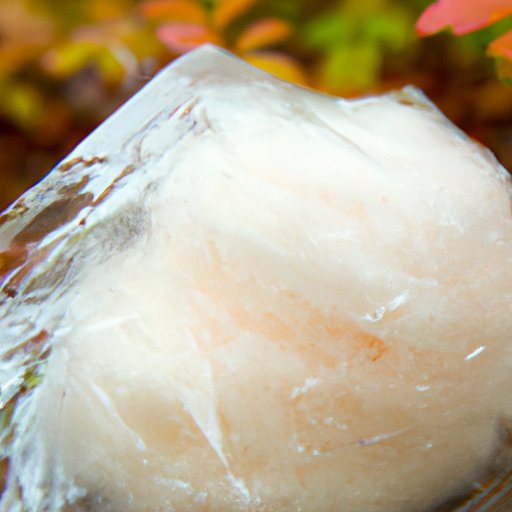
Is Cotton Candy Gluten-Free? Exploring this Sweet Treat for Those with Dietary Restrictions
For those with celiac disease or a gluten allergy, finding tasty treats to indulge in can be a challenge. The food industry has come a long way in creating gluten-free alternatives, but not every food item is safe for those living with gluten allergies. With its unique texture and sugary sweetness, one may wonder if cotton candy is gluten-free or not. This article will explore the topic of cotton candy and gluten, discussing the manufacturing process, different types of cotton candy, and providing tips for finding gluten-free cotton candy options.
Is Cotton Candy Gluten-Free?
Before diving into the details of cotton candy, let’s first answer the question at hand: is cotton candy gluten-free? The simple answer is yes, cotton candy is typically gluten-free. The main ingredients of traditional cotton candy are sugar, corn syrup, and flavorings. None of these ingredients contain gluten. However, there are some types of cotton candy that may contain gluten, which will be discussed further on.
Different Types of Cotton Candy
Traditional cotton candy is made from sugar, corn syrup, and flavorings that are melted together and then spun into thin threads, which are then wound into a cone. While traditional cotton candy is typically gluten-free, there are some types of cotton candy that are made with additional ingredients that may contain gluten. Some of these types include:
- Flavored cotton candy – While the flavorings themselves are typically gluten-free, some flavorings may have gluten added to them, so it’s important to read the labels.
- Novelty cotton candy – This type of cotton candy can come in elaborate shapes and flavors and may have added ingredients like chocolate or sprinkles, which may contain gluten.
- Organic cotton candy – While some organic cotton candy may be gluten-free, it’s always important to read the labels as different manufacturers may use different ingredients.
When in doubt about whether or not a specific type of cotton candy is gluten-free, it’s best to ask the vendor or manufacturer directly.
Gluten-Free Cotton Candy Recipes
For those who prefer to make their own cotton candy, there are plenty of gluten-free recipes available. One popular gluten-free alternative is to use organic sugar, as it’s less likely to be contaminated with gluten during processing. Another option is to use flavored extracts, which are typically gluten-free. Below are some gluten-free cotton candy recipes to try:
- Cherry Cotton Candy – Ingredients: organic granulated sugar, cherry extract, red food coloring (optional). Combine sugar and cherry extract and follow traditional cotton candy-making process.
- Blue Raspberry Cotton Candy – Ingredients: organic granulated sugar, blue raspberry extract, blue food coloring (optional). Combine sugar and blue raspberry extract and follow traditional cotton candy-making process.
Navigating Gluten-Free Cotton Candy at Fairs and Carnivals
When attending fairs and carnivals, it can be challenging to find gluten-free foods, as many concession stands will sell gluten-containing items like funnel cakes and fried treats. However, there are some ways to find gluten-free cotton candy at events. Here are a few tips:
- Ask the vendor – If you’re unsure if the cotton candy is gluten-free or not, simply ask the vendor. They should be able to tell you what ingredients are used.
- Look for pre-packaged cotton candy – Some vendors may sell pre-packaged cotton candy, which will typically have ingredient labels and allergen information available.
- Bring your own cotton candy machine – If you want to be absolutely certain that the cotton candy you’re eating is gluten-free, consider bringing your own cotton candy machine and ingredients. This will ensure that there is no cross-contamination with gluten-containing foods.
Tips for Identifying Gluten-Free Cotton Candy
When looking for gluten-free cotton candy, it’s important to know what to look for on labels. According to the FDA, if a food item contains less than 20 parts per million of gluten, it can be labeled as gluten-free. Some tips for identifying gluten-free cotton candy include:
- Look for the gluten-free label – While not all gluten-free foods are required to have a label, many manufacturers will include a gluten-free certification on their products.
- Read the ingredient list – Ingredients that may contain gluten include wheat, barley, and rye. If any of these ingredients are listed, the product is not gluten-free.
- Look for allergen statements – Many food items will come with a statement that warns of potential allergens. Look for statements like “contains wheat” or “may contain traces of wheat.”
The Ingredients and Manufacturing Process Behind Cotton Candy
Now that we’ve covered the basics of cotton candy and gluten, let’s dive deeper into the manufacturing process and ingredients used to make cotton candy. As mentioned earlier, traditional cotton candy is made from sugar, corn syrup, and flavorings. These ingredients are melted together and then spun into thin threads using a special machine. The threads are then wound onto a cone, creating the fluffy, sweet treat we all know and love.
While none of the traditional cotton candy ingredients contain gluten, there is always a possibility for cross-contamination. For those with severe gluten allergies or celiac disease, it’s best to look for cotton candy that has been made in a dedicated gluten-free facility or to make your own cotton candy at home.
Conclusion
Cotton candy can be a fun and delicious treat for those living with gluten allergies or celiac disease. While there are some types of cotton candy that may contain gluten, traditional cotton candy is typically gluten-free. By following some of the tips and recipes provided in this article, individuals with gluten allergies can continue to indulge in this sweet treat. It’s important to always read labels and ask questions when unsure about the gluten-free status of a food item. Remember, gluten-free living doesn’t have to be dull – there are plenty of tasty treats available for those with dietary restrictions.





